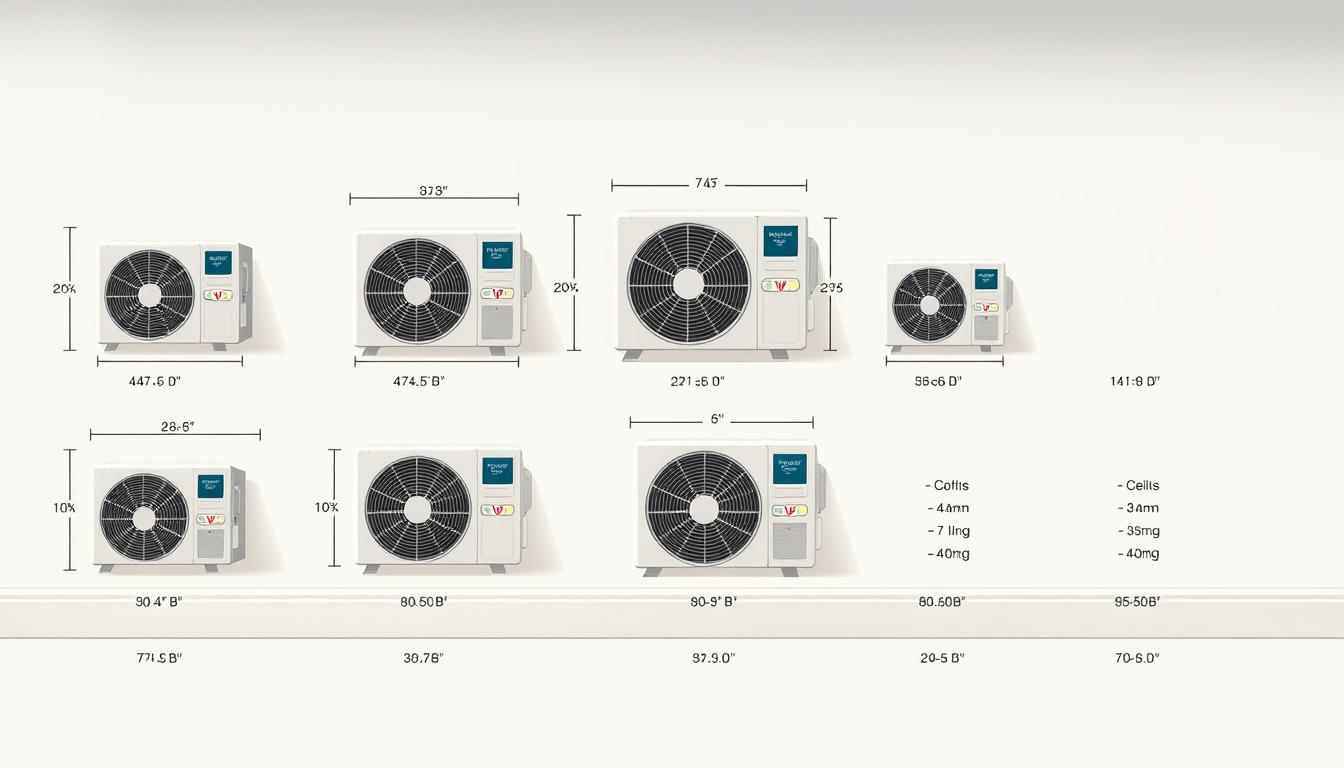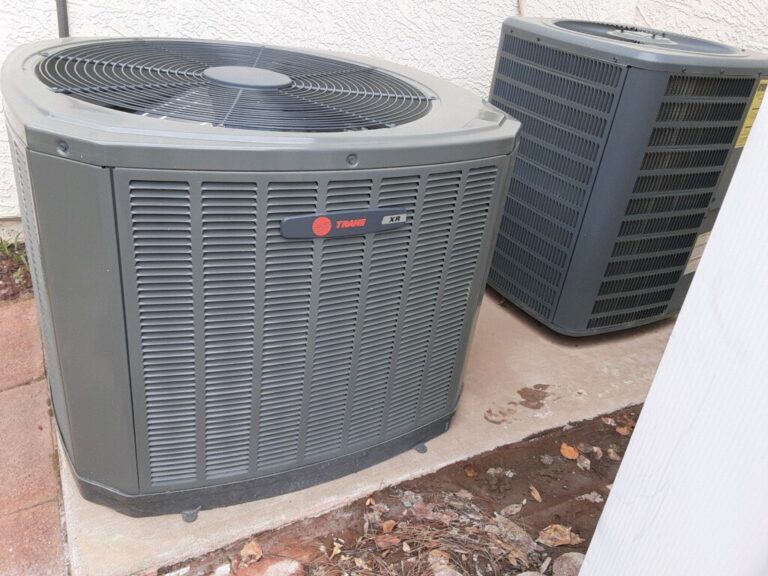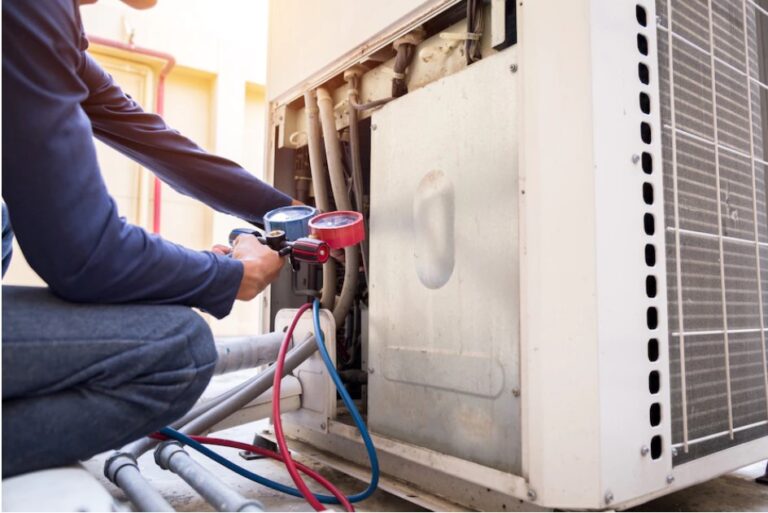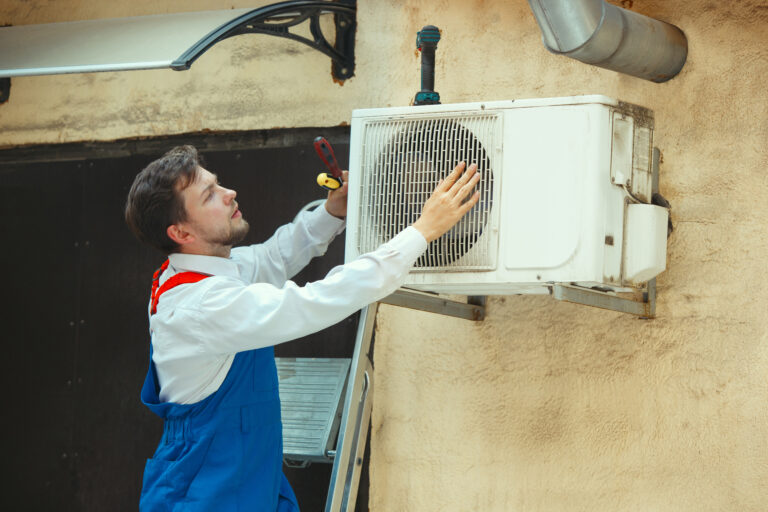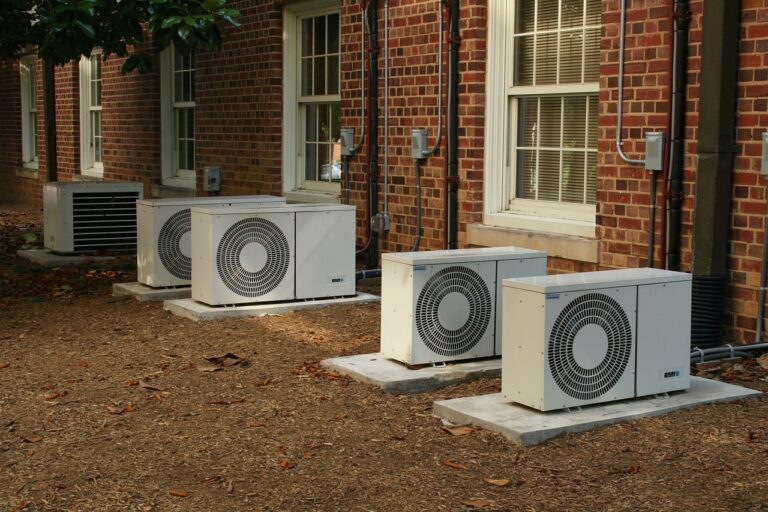What Size AC Unit Do You Need? A Complete Sizing Guide
Choosing the right size air conditioner for your home is crucial for optimal comfort and efficiency.
An incorrectly sized HVAC system can lead to higher energy bills, reduced comfort, and premature system failure.
To determine the correct size, it’s essential to understand British Thermal Units (BTUs) and how they relate to your home’s square footage.
Factors like climate, insulation, ceiling height, and sun exposure also impact the ideal cooling system size.
Key Takeaways
- Proper air conditioner sizing ensures optimal comfort and efficiency.
- Incorrect sizing can lead to higher energy bills and premature system failure.
- Understanding BTUs and tonnage is crucial for selecting the right cooling system.
- Factors beyond square footage affect the ideal air conditioner size.
- Professional sizing methods like Manual J calculations provide the most accurate results.
Why AC Unit Size Matters
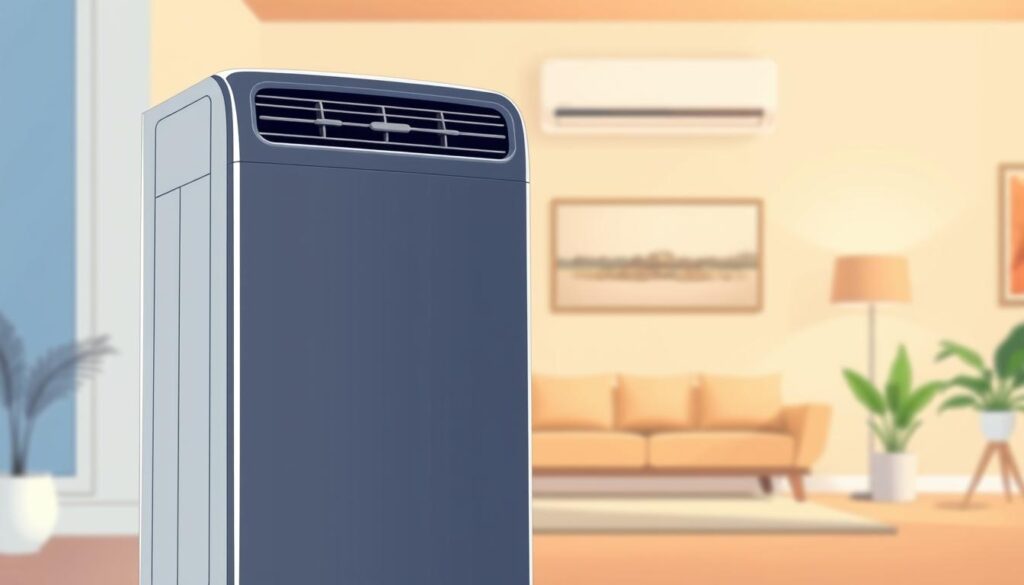
Air conditioner size matters more than you think when it comes to cooling your home efficiently. The size of your air conditioner directly impacts your home’s comfort level and energy efficiency.
An air conditioner that’s too small or too large can lead to various issues, affecting not only your comfort but also your wallet.
Problems with Undersized Units
An undersized air conditioner runs constantly, struggling to reach the desired temperature. This leads to higher energy bills and uneven cooling throughout your home. When your air conditioner is too small, it works harder, causing premature wear and tear.
Undersized units also fail to maintain the desired indoor temperature, especially during peak summer temperatures, making your home uncomfortable.
Issues with Oversized Units
On the other hand, an oversized air conditioner cools your home too quickly, resulting in short cycling – frequent turning on and off. This not only wastes energy but also fails to properly dehumidify the air, creating uncomfortable temperature fluctuations.
Oversized units can also lead to increased humidity levels, potentially causing issues like mold or mildew build-up in your home.
Understanding AC Unit Measurements
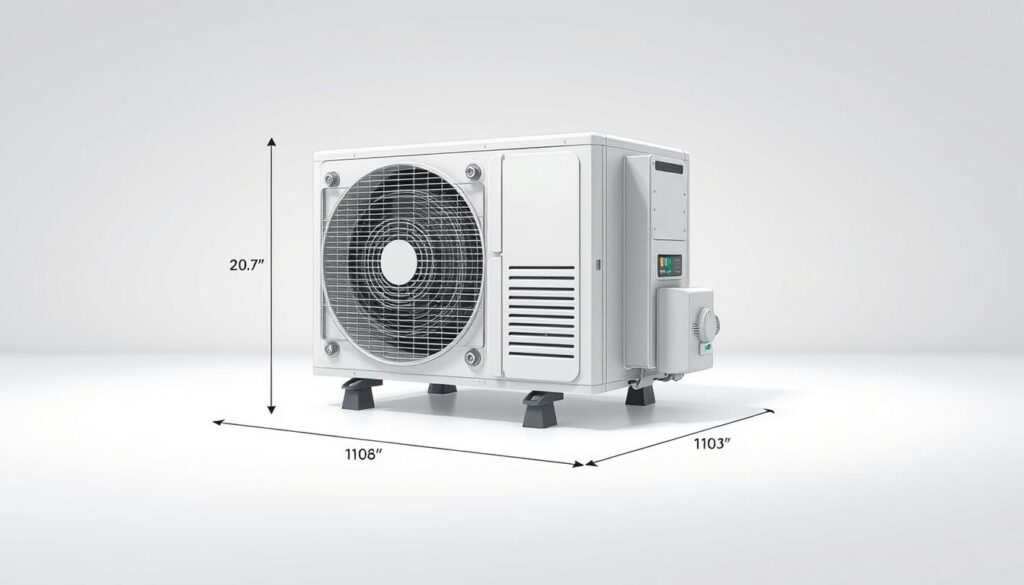
When it comes to air conditioning, understanding the measurements is crucial for optimal performance. The capacity of an air conditioning unit is typically measured in British Thermal Units (BTUs) or tons, which indicate its cooling ability.
British Thermal Units (BTUs) Explained
BTUs measure the amount of heat an air conditioning unit can remove from a space per hour. One BTU represents the energy needed to raise one pound of water by one degree Fahrenheit. BTUh (British thermal units per hour) is the standard measurement of cooling capacity, indicating how much heat your AC can remove in a single hour of operation. For instance, a higher BTU rating means a greater cooling capacity.
- BTUs measure the energy required to cool a space.
- A higher BTU rating indicates greater cooling capacity.
Tonnage and Cooling Capacity
Air conditioner tonnage is another way to express cooling capacity, with one ton equaling 12,000 BTUs of cooling power per hour. This terminology originated from when cooling capacity was measured by how much ice melted in a day. Most residential central air conditioning systems range from 1.5 to 5 tons (18,000 to 60,000 BTUs), while window units typically range from 5,000 to 12,500 BTUs depending on the room size they’re designed to cool. For more information on installing a new central heating system, you can visit this resource.
Types of Air Conditioning Systems
Understanding the different types of air conditioning systems is crucial in selecting the best one for your home’s specific needs. With various options available, each with its unique benefits and drawbacks, choosing the right system can be a bit overwhelming. However, by familiarizing yourself with the most common types of air conditioning systems, you can make an informed decision that suits your comfort and budget requirements.
Split-System Air Conditioners
Split-system air conditioners are the most common residential cooling solution, featuring separate indoor and outdoor components that work together to cool your home through existing ductwork. The outdoor unit contains the compressor and condenser, while the indoor unit houses the evaporator coil and air handler, offering an effective balance of efficiency, cost, and noise control.
Ductless Mini-Split Systems
Ductless mini-split systems provide flexible zoning options without requiring ductwork, making them ideal for home additions, older homes without ducts, or creating temperature-controlled zones within your home. Each ductless mini-split indoor air handler can be controlled independently, allowing different rooms to maintain different temperatures according to occupant preferences.
Packaged Units
Packaged units combine all components in a single outdoor cabinet that connects directly to your home’s ductwork, making them ideal for homes with limited indoor space for HVAC equipment or those without attics or basements. This type of system is convenient for homes where space is a constraint.
| System Type | Description | Ideal For |
|---|---|---|
| Split-System | Separate indoor and outdoor units connected through ductwork | Homes with existing ductwork |
| Ductless Mini-Split | No ductwork required; flexible zoning options | Home additions, older homes, or zoning |
| Packaged Units | All components in a single outdoor cabinet | Homes with limited indoor space or no attic/basement |
The Complete AC Unit Sizing Guide
Getting the air conditioner size right is essential for effective cooling and cost efficiency. To help you make an informed decision, we’ve put together this comprehensive guide.
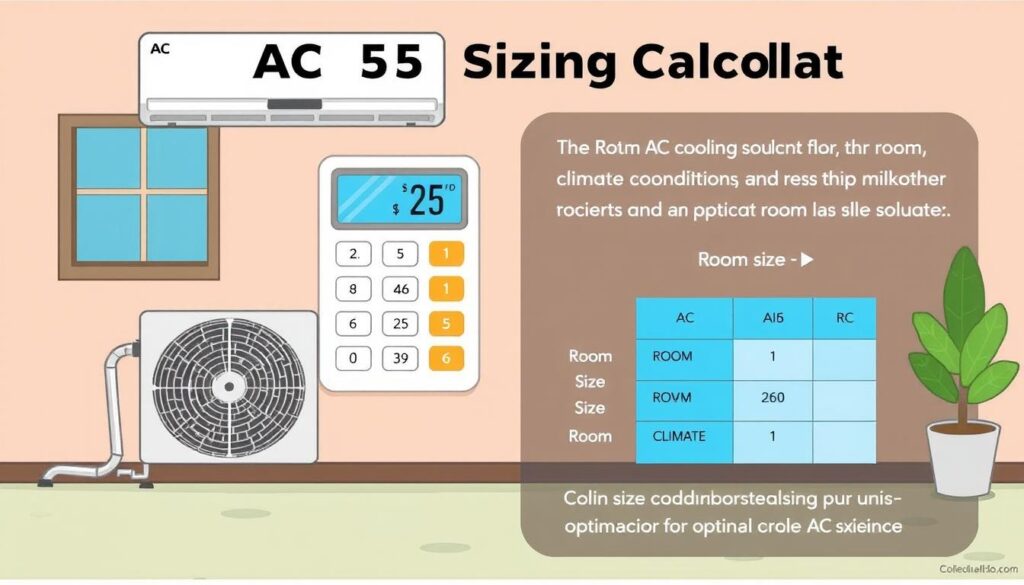
Square Footage Method
The square footage method is a widely used approach to determining the correct size of an air conditioner for your home. To use this method, you need to calculate your home’s total square footage and then multiply it by 20 BTUs to determine your basic cooling needs.
For instance, a 2,000-square-foot home would require an air conditioner with a cooling capacity of around 40,000 BTUs, which translates to a 3-3.5 ton unit. This calculation serves as a baseline, and other factors may influence the final size you need.
AC Size Chart by Home Size
AC size charts provide a quick reference to determine the appropriate air conditioner size based on your home’s square footage. Here’s a general guideline:
- 600-1,000 sq ft: 1.5 tons
- 1,000-1,500 sq ft: 2 tons
- 1,500-2,000 sq ft: 3 tons
- 2,000-2,500 sq ft: 4 tons
- 2,500-3,300 sq ft: 5 tons
Window AC Unit Sizing
When it comes to window AC units, sizing is crucial for effective cooling. You’ll need to calculate the square footage of the room where the window unit will be installed. A room between 150-250 square feet requires a 5,000-6,500 BTU unit, while a space between 350-550 square feet needs 9,800-12,500 BTUs.
Don’t forget to consider connected spaces without doors, as the window unit will be cooling these areas as well.
Factors That Affect AC Unit Size
Several key factors influence the size of the AC unit you need for your home. Understanding these factors is crucial for selecting an air conditioning unit that provides optimal cooling while minimizing energy consumption.
Climate and Geographic Location
The climate and geographic location of your home play a significant role in determining the required AC unit size. Homes in hot, humid climates like Florida or Texas need larger units compared to similar-sized homes in cooler regions like Minnesota or Maine. In warmer climates, AC units run more frequently, necessitating a higher cooling capacity.
Home Insulation and Windows
Home insulation quality directly affects how well your home retains cool air. Well-insulated homes with proper sealing around windows and doors may require smaller AC units than poorly insulated homes of the same size. The number and efficiency of windows also impact AC sizing, as larger and less energy-efficient windows allow more heat to enter.
Ceiling Height and Room Layout
Ceiling height is another critical factor, as higher ceilings increase the volume of air that needs cooling. Standard calculations assume 8-9 foot ceilings, so homes with vaulted or high ceilings require additional cooling capacity, approximately 10% more for each foot above standard.
Occupancy and Heat-Generating Appliances
The number of people occupying your home and the presence of heat-generating appliances like ovens, computers, and entertainment systems also impact AC sizing. Kitchens, for example, typically need additional cooling capacity, approximately 4,000 BTUs more, due to the heat produced by cooking appliances.
Sun Exposure and Home Orientation
Sun exposure varies based on home orientation, with south and west-facing rooms receiving more direct sunlight and heat. This may require 10% more cooling capacity than north-facing spaces with the same square footage. Understanding your home’s orientation and sun exposure can help in selecting the right-sized AC unit.
Energy Efficiency and SEER Ratings
Energy efficiency is a key consideration when choosing an air conditioner, as it directly affects your cooling costs and environmental footprint. The Seasonal Energy Efficiency Ratio (SEER) rating is a crucial metric that measures an air conditioner’s efficiency over a typical cooling season.
What SEER Ratings Mean
A SEER rating is calculated by dividing the cooling output (in BTUs) by the energy input (in watts) over the course of the cooling season. The higher the SEER rating, the more efficient the air conditioner. The U.S. Energy Information Administration requires a minimum SEER rating of 14 in northern states and 15 in southern states. Look for an Energy Star label with an energy-efficiency ratio (EER) of 10 or higher—or a SEER rating of 15 or higher—to ensure an efficient unit.
The benefits of higher SEER ratings include significant energy savings. For instance, high-efficiency models can reach 20+ SEER, potentially saving 20-40% on cooling costs compared to older units.
Finding the Right Balance Between Size and Efficiency
When balancing size and efficiency, it’s essential to remember that an efficiently-sized unit with a moderate SEER rating often performs better than an oversized unit with a high SEER rating. To achieve the ideal balance, consider factors such as your climate, cooling needs, and how long you plan to stay in your home. For more insights on installing an AC unit efficiently, visit Better Ways to Install an AC.
| SEER Rating | Energy Efficiency | Potential Savings |
|---|---|---|
| 14-15 | Minimum Efficiency | Baseline |
| 16-18 | High Efficiency | 10-20% |
| 20+ | Very High Efficiency | 20-40% |
Professional AC Unit Sizing Methods

Proper AC unit sizing is a critical factor in achieving energy efficiency and comfort. To ensure accurate sizing, professionals rely on advanced methods that go beyond basic calculations.
Manual J Calculation Explained
The Manual J calculation is the industry standard for determining the precise cooling requirements of a home. This method takes into account various factors, including climate zone, ductwork efficiency, window quantity and quality, insulation levels, home orientation, occupancy, and heat-generating appliances. By considering these factors, Manual J calculations provide a comprehensive assessment of a home’s cooling needs.
Professional HVAC technicians use specialized software to perform Manual J calculations, ensuring that the air conditioner is perfectly sized for the specific characteristics of the home.
Benefits of Professional Energy Audits
Energy audits offer numerous benefits, including comprehensive assessments of a home’s efficiency and identification of issues that affect cooling needs. These audits can reveal problems such as air leaks, insufficient insulation, or ductwork issues, allowing homeowners to address these problems and optimize their cooling system.
Many utility companies offer free or discounted energy audits and Manual J calculations, making professional sizing accessible to most homeowners and potentially saving thousands in avoided equipment and operating costs.
Maximizing Your AC Unit’s Performance
To get the most out of your air conditioning system, it’s crucial to not only choose the right size but also ensure it’s properly maintained. Maximizing your AC unit’s performance involves regular maintenance and smart usage habits. Regular maintenance is crucial, including changing or cleaning filters every 1-3 months and keeping outdoor units clear of debris.
Using a smart thermostat can significantly improve your HVAC system’s efficiency by automatically adjusting temperatures based on your schedule. This can potentially save 10-15% on cooling costs.
Proper home preparation also plays a significant role in helping your air conditioner work more efficiently. Using ceiling fans to improve air circulation, closing blinds during peak sun hours, and sealing air leaks around windows and doors can make a significant difference.
Even with the best-sized air conditioner, proper installation by qualified HVAC professionals is necessary for optimal performance. By following these tips, you can ensure your AC unit provides the best possible comfort while minimizing energy consumption.

